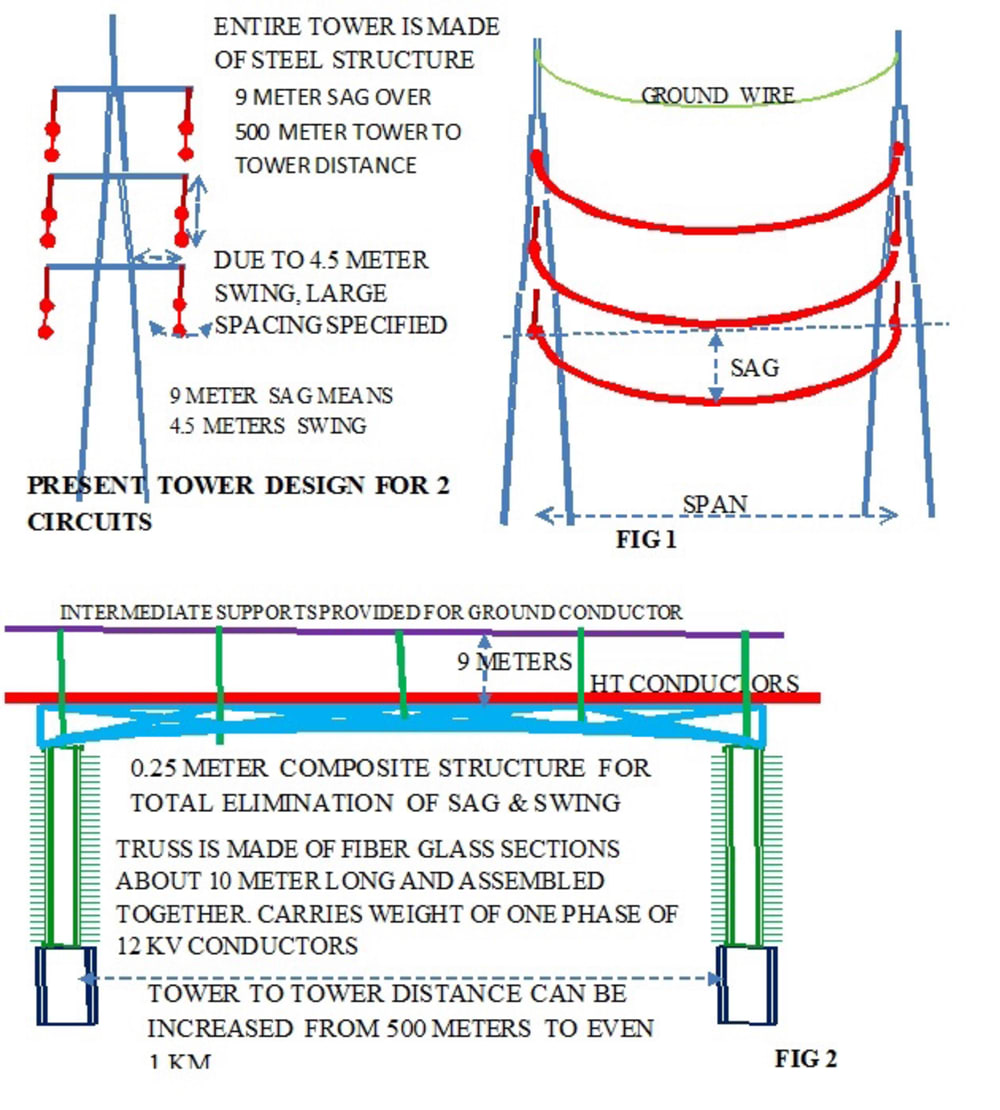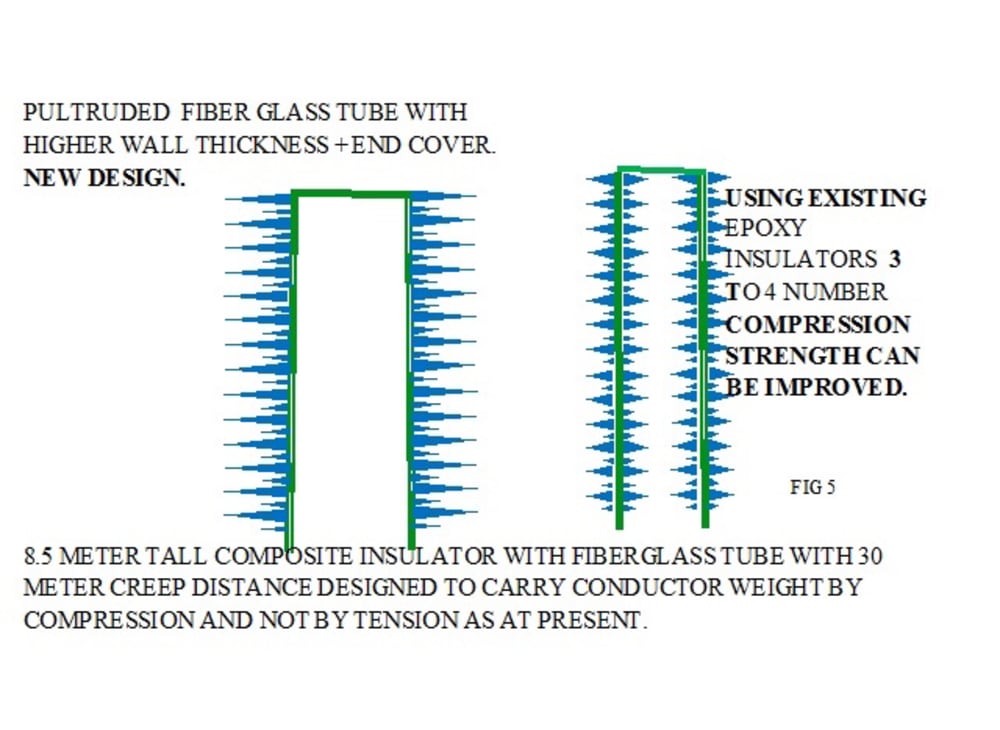The world over, electrical power transmission and distribution engineers have been concerned with high sag and large swing in power transmission lines. High sag needs taller transmission towers. High dynamic vehicular load and no swing or sag is permissible. High sag coupled with large swing means wider right of way (ROW) has to be provided. Where land is a premium, wider ROW means higher cost of land acquisition, especially when the line is passing through urban areas or fertile agricultural fields. I was shocked to learn that many transmission towers built today use angles are not earthquake proof. The concept and ideas suggested can be used for both HVDC as well as HVAC and for high tension as high 1200KV lines.
However civil engineers have built road bridges and pipeline bridges with spans as long as 2 kms or more. Note road bridges carry dynamic vehicular traffic and these bridges are earthquake proof too. So why not use certain concepts of long span bridges for the power lines? The power lines are lighter in weight, but have high voltage. That is all the difference. Earlier ceramic insulators were used which have high compression strength. However these are heavy and fragile. Recently epoxy based insulators have been introduced which are lighter in weight, but are better at handling tensile load easily and not good for compression loads. However by putting 3 to 4 epoxy insulators, compression handling capability can be obtained.
Some of the long span bridges are Great Belt Bridge (Eastern), Mackinac Bridge(I-75 over the Straits of Mackinac in Michigan), Sutong Bridge, Evergreen Point Floating Bridge(State Route 520 across Lake Washington in Washington state). For details see https://en.wikipedia.org/wiki/List_of_longest_bridges_in_the_world
Why don't the structural engineers and electrical engineers sit together and find a solution? Suggested structures are shown in Fig 1 to 5. The three phase lines are shown placed horizontally. But same could be constructed in 3 tires one over the other in a single stack further reducing ROW. Multi-tiered road bridges are also possible, why not multi-tiered insulated bridges. One could adopt this for short applications for crossing over high ways, river / water bodies / thickly populated areas or even for entire length. In cold countries with heavy snow, the tower has to carry weight of conductor + snow. Design here uses fiberglass for insulation- and not steel- that is all the difference. Conductors could be covered with water repellent canopy over the conductor. If anyone has hesitation, I can suggest ways to just slide & place the conductor over platforms, and not find an excuses as to how one can find ways to place R.
Like this entry?
-
About the Entrant
- Name:Mohan Divekar
- Type of entry:individual
- Software used for this entry:None
- Patent status:none








